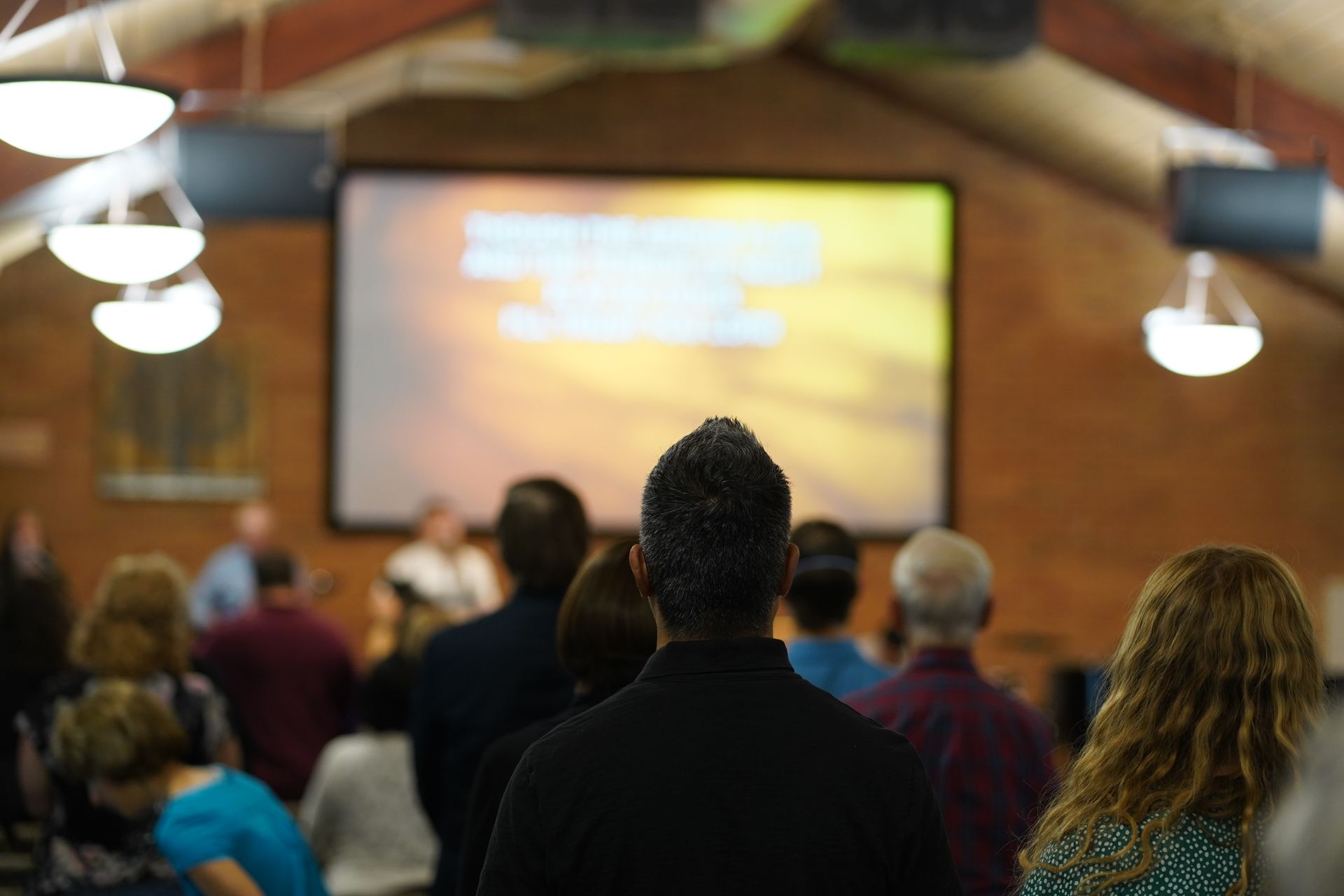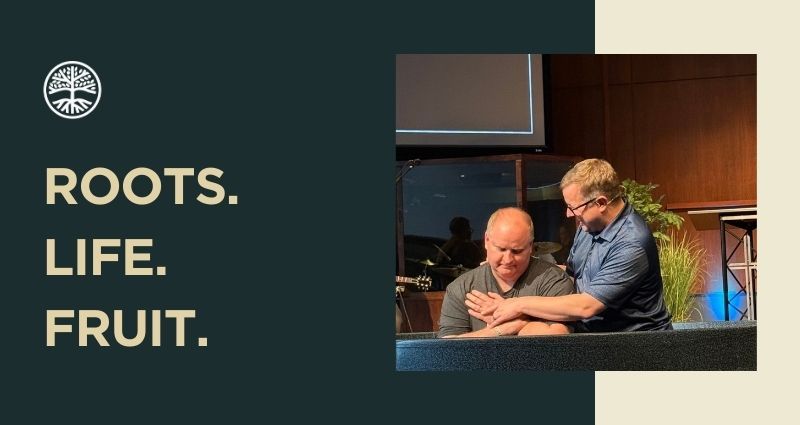Share this Article:
Written by: The Orchard

Throughout history, God has revealed Himself in remarkable ways, often giving His people signs to confirm His promises and guide their steps. From the burning bush that called Moses to lead Israel out of Egypt to the visions granted to prophets like Isaiah and Daniel, Scripture is filled with examples of God making His presence and purpose unmistakably clear. These moments often came during times of great need or uncertainty, inviting God’s people to trust His plan and respond with faith.
Among these remarkable revelations, none is greater than the fulfillment of God’s ultimate promise—the birth of Jesus. The Nativity marks the culmination of centuries of prophecy, a moment foretold by God’s messengers and awaited by His people. From the words of Isaiah describing the coming of a child born to be called “Wonderful Counselor, Mighty God, Everlasting Father, Prince of Peace” (Isaiah 9:6) to Micah’s prophecy that a ruler would arise from Bethlehem (Micah 5:2), the Scriptures pointed to the arrival of a Savior who would bring hope, redemption, and light into the world.
As we reflect on the Nativity story, we see how God faithfully fulfilled these promises, revealing Himself through signs that pointed unmistakably to His Son. A virgin conceived, shepherds encountered angelic hosts, and wise men were led by a star to the Messiah. Each of these signs invited faith-filled responses, reminding us that God still works in ways that call His people to trust Him.
This Christmas season, as we marvel at God’s faithfulness in sending His Son, it’s a fitting time to ask: Does God still give us signs today? How can we discern His guidance and respond faithfully, just as those who witnessed the signs of Jesus’ birth did so long ago?
Understanding Signs from God in Scripture
The Bible is filled with moments when God made His presence unmistakable, using signs to guide His people and affirm His promises. These divine acts were never random; they confirmed His Word, strengthened faith, and provided direction during pivotal moments in His redemptive plan. From miraculous events to prophetic visions, signs consistently pointed to God’s purpose and invited a response of trust and obedience.
Signs also carried profound theological meaning, revealing truths about God’s character,
His covenantal love, and His plans for redemption. Exploring these signs helps us see how God faithfully interacted with His people, how they were called to respond, and what that means for us today.
How God Used Signs in the Old Testament
In the Old Testament, God used signs to affirm His promises, demonstrate His power, and guide His people. These signs often came at critical moments, calling for faith-filled responses and shaping the course of His redemptive plan.
“I will never again curse the ground because of man, for the intention of man's heart is evil from his youth. Neither will I ever again strike down every living creature as I have done.”
One of the earliest signs is the rainbow after the flood. In Genesis 9:12-17, God declared, “This is the sign of the covenant that I make between me and you and every living creature that is with you, for all future generations.” The rainbow symbolized God’s mercy and His promise never to destroy the earth with a flood again. Noah responded by worshiping the Lord, building an altar, and offering sacrifices (Genesis 8:20-21). The rainbow became a tangible reminder of God’s faithfulness, inviting Noah and his descendants to live in trust of God’s promises.
Another significant sign is the burning bush in Exodus 3:2-4. When Moses encountered this miraculous sight—a bush that burned but was not consumed—he was filled with awe and reverence, hiding his face in fear. God used this sign to call Moses to lead Israel out of Egypt, revealing Himself as “I AM WHO I AM,” the eternal and self-sufficient God. Though Moses hesitated, questioning his ability to fulfill the task, the sign reassured him that God’s presence and power would go with him.
Perhaps the most dramatic sign is the parting of the Red Sea in Exodus 14:21-22. As the Israelites faced Pharaoh’s advancing army, fear and doubt overtook them. They cried out to Moses, questioning whether they should have left Egypt. Yet when God parted the sea, allowing them to cross on dry ground, the people were awestruck. Scripture records, “Israel saw the great power that the Lord used against the Egyptians, so the people feared the Lord, and they believed in the Lord and in his servant Moses.” This miraculous sign not only delivered them from danger but also solidified their faith in God’s sovereignty and commitment to their redemption.
The Old Testament also contains prophetic signs pointing to the coming of Jesus. In Isaiah 7:14, the prophet declared, “Therefore the Lord himself will give you a sign. Behold, the virgin shall conceive and bear a son, and shall call his name Immanuel.” This prophecy not only foretold Jesus’s miraculous birth but also highlighted His divine identity as “God with us.” Similarly, Micah 5:2 prophesied, “But you, O Bethlehem Ephrathah, who are too little to be among the clans of Judah, from you shall come forth for me one who is to be ruler in Israel, whose coming forth is from of old, from ancient days.”
Fear not, for behold, I bring you good news of great joy that will be for all the people. For unto you is born this day in the city of David a Savior, who is Christ the Lord.
These prophetic signs were fulfilled with precision centuries later in the New Testament. The wise men, who followed a star to find the newborn King, relied on these ancient prophecies to guide their journey. Matthew 2:5-6 recounts how Herod’s scribes confirmed Jesus’s birthplace using Micah’s prophecy, directing the wise men to Bethlehem. The star they followed was another sign, placed by God to point unmistakably to the Savior. These events demonstrate that God’s signs are not bound by time—they connect His eternal promises to His perfect fulfillment.
These signs were more than miraculous events; they revealed God’s sovereignty, His faithfulness, and His patience with human weakness. Whether through awe-filled worship, hesitant questioning, or even moments of fear, each sign invited a response of trust in God’s plan. By exploring these stories, we see that God’s signs in the Old Testament weren’t just displays of power—they were divine invitations to believe, obey, and rest in His unfailing promises.
Jesus and Signs in the New Testament
As Jesus entered His ministry, the New Testament becomes filled with signs and miracles that revealed His identity as the Son of God and the fulfillment of God’s redemptive plan to lead His people to salvation.
One of the first and most subtle signs was at the wedding in Cana, where Jesus turned water into wine (John 2:1-11). This miracle met an immediate need, saving the host from embarrassment, but its significance ran deeper. By transforming ordinary water into the finest wine, Jesus pointed to the abundance and joy of His kingdom. Scripture tells us, “This, the first of his signs, Jesus did at Cana in Galilee, and manifested his glory. And his disciples believed in him.” The disciples’ belief demonstrates how even a quiet sign can spark faith in those who are watching for God’s work.
Another profound sign was the feeding of the 5,000 (John 6:1-14). As the crowd grew hungry, Jesus took five loaves and two fish, gave thanks, and distributed enough food to satisfy everyone present, with twelve baskets left over. This miracle not only addressed physical hunger but also revealed a spiritual truth. Jesus later explained, “I am the bread of life; whoever comes to me shall not hunger, and whoever believes in me shall never thirst” (John 6:35). The crowd’s response ranged from amazement to misunderstanding, as some sought Jesus simply for more bread. This sign called them—and us—to recognize Jesus as the ultimate source of spiritual nourishment and eternal satisfaction.
Jesus said to her, ‘I am the resurrection and the life. Whoever believes in me, though he die, yet shall he live, and everyone who lives and believes in me shall never die. Do you believe this?’ She said to him, ‘Yes, Lord; I believe that you are the Christ, the Son of God, who is coming into the world.
Perhaps the most dramatic of all was the raising of Lazarus from the dead (John 11:1-44). When Jesus arrived in Bethany, Lazarus had already been in the tomb for four days. In response to Martha’s grief and doubt, Jesus declared, “I am the resurrection and the life. Whoever believes in me, though he die, yet shall he live.” Moments later, Jesus called out, “Lazarus, come out”, and Lazarus walked out alive, wrapped in burial cloths. This sign demonstrated Jesus’s power over death and foreshadowed His own resurrection.
Through these signs and promises, Jesus revealed not only His divine authority but also His profound compassion for humanity. His miracles met real needs, whether healing the sick, feeding the hungry, or raising the dead. Yet, they all pointed to a greater truth: Jesus Himself is the greatest sign of all—the fulfillment of God’s promise to save His people and restore creation.
Does God Give Signs Today?
The Bible affirms that God can still use signs to guide His people, but His primary means of communication is through His Word. 2 Timothy 3:16-17 declares, “All Scripture is breathed out by God and profitable for teaching, for reproof, for correction, and for training in righteousness, that the man of God may be complete, equipped for every good work.” Scripture provides everything we need to know about God’s character, His will, and His plan for our lives.
However, through prayer and the work of the Holy Spirit, believers may still experience God’s guidance in ways that align with His Word. For example, a specific answer to prayer or a timely word of encouragement can be a sign of God’s care. Philippians 4:6-7 reminds us, “Do not be anxious about anything, but in everything by prayer and supplication with thanksgiving let your requests be made known to God. And the peace of God, which surpasses all understanding, will guard your hearts and your minds in Christ Jesus.”
True signs today will never contradict Scripture and always serve to draw us closer to God. They deepen our trust in His plan, reminding us that He is present and faithful even when His leading isn’t immediately clear.
Take the next step in your faith journey with The Orchard!
Close to our Chicagoland locations?
Find a campus near you
and join us in person.
Farther away? Join us online and be part of our growing community.
Have questions? We’re here to help!
Signs God Is Speaking to You
God desires a relationship with His people and speaks to us in ways that guide, comfort, and convict. The clearest way God communicates is through His Word. Scripture is His inspired and unchanging truth, equipping us with everything we need to know about His character and will. If you’re seeking to hear from God, begin by immersing yourself in His Word.
As believers, we are bound by the Holy Spirit, who works in, guiding us into truth, convicting us of sin, and reminding us of Jesus’s teaching (John 14:26). Through prayer, we align our hearts with God’s and often experience His peace or conviction, which can clarify His leading. God may also use life circumstances or wise counsel from others to direct us, but these must always align with Scripture (Proverbs 11:14).
Discerning God’s voice requires testing what we hear against His Word and ensuring it reflects His character and purposes (1 John 4:1). Even when His guidance isn’t immediately clear, we can trust His promise to direct our paths as we seek Him with faith and obedience (Proverbs 3:5-6). God’s voice always leads us closer to Him and deeper into His truth.
Can We Ask God for a Sign?
The Bible is filled with stories of people asking God for signs, seeking His guidance and assurance in critical moments. From Gideon’s fleece to Hezekiah’s request for a shadow to move backward, these signs often provided clarity and strengthened faith. However, they were never given as a substitute for trust in God’s Word or character.
Examples of People Asking for Signs in the Bible
In Scripture, asking for a sign often arose from a desire for assurance in response to God’s call or promise. For instance, King Hezekiah sought a sign when the prophet Isaiah told him that God would extend his life. Hezekiah asked for the shadow on a sundial to move backward—a miraculous event that God granted (2 Kings 20:8-11). Hezekiah sought signs during significant, God-initiated moments, and their requests revealed a need for reassurance as they stepped into difficult situations.
The Story of Gideon: Asking God for a Sign
Gideon’s story provides a nuanced example of asking for a sign. When God called him to deliver Israel from the Midianites, Gideon doubted his ability and asked for confirmation through a fleece. First, he requested that the fleece be wet with dew while the surrounding ground remained dry. Then, he reversed the request, asking for the fleece to remain dry while the ground was wet. Gideon’s cautious approach stemmed from his insecurity and fear, not disbelief in God’s power.
Then Gideon said to God, 'Let not your anger burn against me; let me speak just once more. Please let me test just once more with the fleece. Please let it be dry on the fleece only, and on all the ground let there be dew.' And God did so that night; and it was dry on the fleece only, and on all the ground there was dew.
God graciously granted both signs, demonstrating His patience and willingness to reassure His people in moments of weakness. These signs strengthened Gideon’s faith, enabling him to take on the task God had set before him. However, Gideon’s story also shows that faith shouldn’t depend on signs. After providing the signs, God directed Gideon to act, calling him to trust fully in His plan and provision.
Is It Faithful to Seek Signs Today?
While God may still provide signs, Scripture teaches us to rely primarily on His Word for guidance. 2 Timothy 3:16-17 reminds us that the Bible equips us for every good work, offering the clarity we need. Additionally, the Holy Spirit works in our hearts to convict, guide, and align us with God’s will (John 14:26).
Seeking signs today can sometimes reveal a lack of trust in God’s promises. Instead of asking for extraordinary confirmation, we’re called to walk by faith, trusting His guidance through Scripture and prayer. If we do seek a sign, we must ensure our hearts are aligned with God’s will, not testing Him but earnestly seeking to follow His direction.
God’s ultimate sign was sending Jesus to redeem us, fulfilling His promises and proving His faithfulness. As we follow Him, we can trust that He will lead us—even when the path requires faith over sight (2 Corinthians 5:7).
How Does God Communicate with Us Today?
God, in His love and wisdom, desires a personal relationship with His people. Though the way He communicates may differ from the dramatic signs and wonders of biblical times, He is still actively speaking to us today. Understanding how God communicates equips us to listen for His voice and respond faithfully.
For the word of God is living and active, sharper than any two-edged sword, piercing to the division of soul and of spirit, of joints and of marrow, and discerning the thoughts and intentions of the heart.
God Speaks Through His Word
The primary way God communicates today is through the Bible. As His inspired Word, Scripture reveals His character, His will, and His plan for redemption. It is living and active, guiding us in every situation and equipping us for all He calls us to do (Hebrews 4:12). When we read and meditate on the Bible, we hear God’s voice and learn to align our lives with His truth.
When the Spirit of truth comes, he will guide you into all the truth, for he will not speak on his own authority, but whatever he hears he will speak, and he will declare to you the things that are to come.
God Speaks Through the Holy Spirit
The Holy Spirit, who
dwells within believers, teaches, convicts, and guides us into truth (John 14:26;
John 16:13). He often prompts us through a sense of peace, conviction, or clarity during prayer and reflection. By cultivating a relationship with the Spirit, we can better discern His voice and follow His leading in our daily lives.
In everything by prayer and supplication with thanksgiving let your requests be made known to God,
God Speaks Through Prayer
Prayer is a two-way conversation where we speak to God and listen for His response. While God may not answer audibly, He often provides wisdom, peace, or conviction as we bring our concerns and questions to Him (Philippians 4:6-7). Through prayer, we grow in our dependence on Him and gain clarity about His will.
Ultimately, God’s voice will always align with His Word and character. To discern His communication, we must be grounded in Scripture, sensitive to the Spirit, and committed to prayer. As we seek Him, we can trust that He is faithful to guide us in His perfect timing and according to His perfect will (Proverbs 3:5-6).
The Dangers of Relying on Signs Alone
Throughout history, God has used signs to guide His people, but relying on signs alone can lead to spiritual pitfalls. Signs are not meant to replace faith in God or His Word; instead, they are tools that point us back to Him. When we focus too heavily on seeking signs, we risk misunderstanding His will, testing His patience, and neglecting the primary ways He communicates with us today through Scripture, the Holy Spirit, and prayer.
Jesus strongly cautioned against seeking signs for the wrong reasons. When the Pharisees demanded proof of His authority, He rebuked them, saying, “An evil and adulterous generation seeks for a sign, but no sign will be given to it except the sign of the prophet Jonah” (Matthew 12:39-40). This pointed to His death, burial, and resurrection—the ultimate sign of God’s redemptive plan. Jesus reminded His followers that signs are not an end in themselves but are meant to inspire faith and lead us to trust in God’s promises.
Signs can be helpful when God provides them, but they are not the foundation of our faith. The greatest sign God has given us is Jesus Christ, whose life, death, and resurrection reveal His love and power. As believers, we are called to walk by faith, not by sight (2 Corinthians 5:7), trusting in the truth of God’s Word and His faithfulness rather than depending on external confirmations.
Growing in Faith Through Obedience and Trust
God’s signs—whether through His Word, the Holy Spirit, or moments of clarity in our lives—are always meant to draw us closer to Him. While it is not wrong to seek signs during times of uncertainty, we must not rely on them as the foundation of our faith. Instead, our trust should rest firmly on God’s unchanging Word, His faithful promises, and the guidance of the Holy Spirit. Though He may sometimes provide signs to guide or reassure us, our ultimate confidence must remain in His character, His sovereignty, and His redemptive work through Jesus Christ.
The Christmas season beautifully reminds us of God’s greatest sign: the birth of His Son, who came to save us and lead us into a relationship with Him. Walking in obedience and trust—even when signs seem absent—deepens our faith and allows His purposes to unfold in our lives. Faith is not about seeking constant confirmation but about confidently relying on the One who has proven His love and faithfulness time and time again.
As we celebrate the birth of Jesus,
we invite you to connect with us at
The Orchard. Through worship, LIFE Groups, and opportunities to serve, you’ll
find a community of believers committed to following Jesus and encouraging one another.
Visit The Orchard to find a location near you or reach out to one of our pastors.
Connect with Us:




